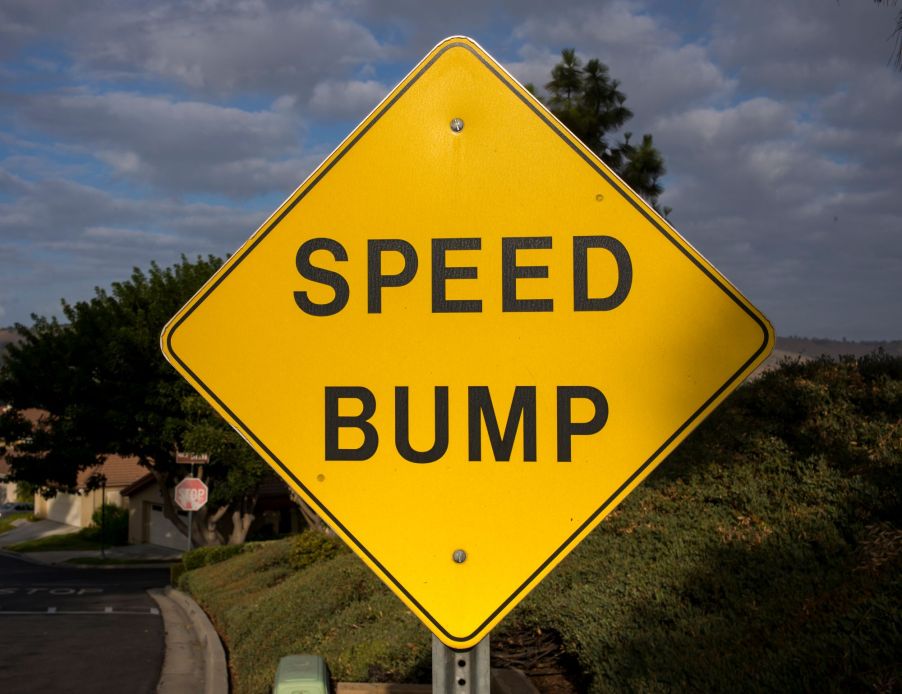
Do Speed Bumps Ruin Your Car?
While some vehicles are built to handle potholes and speed bumps fairly well, most cars take a beating when driving over them unless you can do it safely. According to the AA website, speed bumps are meant to slow down traffic flow through a specific area. What kinds of speed bumps are we likely to encounter, and how should you handle them?
What are the different types of speed bumps and how do they work?

Speed bumps are typically made of plastic or rubber and are often marked with road paint to alert you of their presence. If an area is known for cars going at excessive speeds, the bump will force them to slow down upon seeing it so they can drive over them safely.
Speed humps are a lot like bumps, except they generally will stretch across the whole road, and they’re covered with asphalt or tarmac to make them look like part of the road that happens to be raised.
Speed cushions are another type of inhibitor to force people to slow down in a certain area. These humps are usually broken up into short rectangular bumps that come in a grouping of two or three pieces. Emergency vehicles are wide enough to run over them without ever having to slow down, whereas a regular car would have to traverse them safely.
Speed tables help vehicles slow down by using a tapering technique that allows the hump to rise to a flattened top, as you might see at some pedestrian crossings. Lastly, the Chicanes are constructed units that turn the road into a snake-like shape. Some dangerous roads, used for racing, have them to prevent speeds over 250 mph.
Do speed bumps damage your car?
Driving along at a decent speed and then suddenly hitting one of these bumps will damage your vehicle. Think about a car that’s propelling forward. If it hits something while at speed, the vehicle will forcefully slow down, which causes jolts to the internal parts of the car. The suspension is one area that’s affected. It won’t have much of a chance to soften the blow, plus some parts are stretched beyond what they were meant to do.
According to JiffyLube Suncoast, tires are another area that’s affected by the bump. They found that at least half of the repairs they perform there are for tire damage after hitting a speed bump. Other issues include the exhaust pipe, which can sometimes get knocked down to hang low to the ground.
If you hit the speed bump hard enough, you could also mess up the steering in the vehicle. If you try to drive afterward, the car might veer to one side of the road without you steering in that direction. A front-end alignment would then be needed to repair that problem.
The proper way to handle speed bumps
According to RAC, the worst speed bumps are ones that aren’t seen clearly beforehand to give you time to slow down and maneuver over them safely. Handling them properly will be key to keeping your vehicle from getting damaged.
If you come across one, start slowing down as soon as you see it. Crawl over the speed bump, and once you’re cleared from it, you can begin increasing your speed again. But, if there isn’t enough of a warning, that could be not easy. Some vehicles have extra-performing suspensions that can take a bump a little faster, but not by much.
However, if you stick with the speed limits and pay close attention to the road, you should be OK if you happen across a speed bump. Most of these inhibitors can be found in parking lots, parks, and other residential areas where most people don’t speed badly.
Speed bumps are great ways to get people to slow down and help prevent accidents and injuries on the road. However, if you’re not paying attention and you end up driving over a bump too quickly, you’re likely to damage your suspension or even one of your tires. Unless you have pretty high ground clearance and a tough suspension, you’re not going to get by with going over one too fast.


